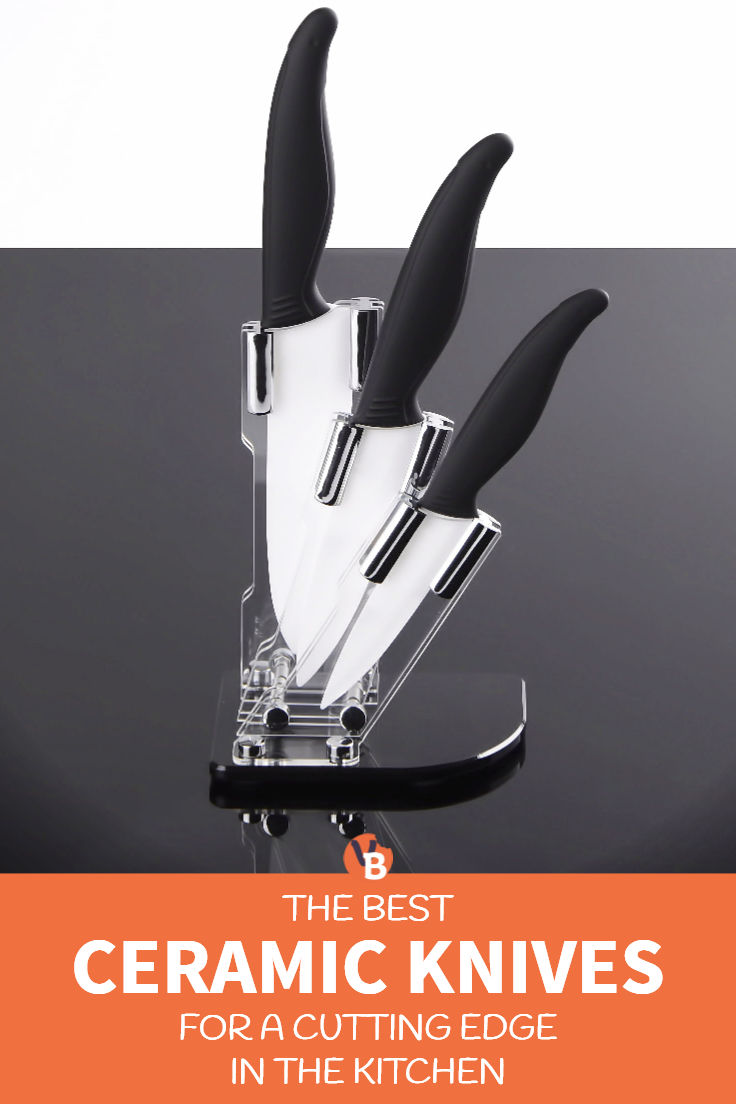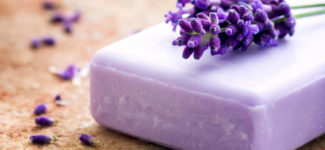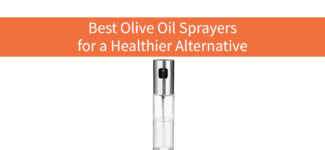Not just any knife will manage this type of frequent food prep, but ceramic knives, made with advanced ceramic, are the toughest and sharpest knives you can find which are perfect for this task!
Here we have rounded up the best ceramic knives to give you the upper hand in the kitchen!
In a Hurry? Here’s Our Quick List of Top Picks
- Muncene 6-Inch Serrated Ceramic Knife Blade
- Ausker Ceramic 4-Piece Knife Set
- Alpha Inspirations Ceramic Chef’s Knife
- Cuisinart C59CE-8SL Elements Ceramic Open Stock Slicing Knife
- Kyocera Advanced Ceramic Revolution Series 7-inch Serrated Knife
What are the Pros and Cons of Ceramic Knives?
The ceramic used to make knives is not the same as the ceramic you are probably familiar with used to make mugs and plates.
This ceramic is dubbed an “advanced ceramic” and it is the second hardest material next to diamonds, and consequently a sharpener using diamonds is the only one effective at sharpening ceramic blades.
What goes into making the blades? The ceramic is made from zirconium oxide through a cooling process resulting in a stable zirconia, and this is called Transformation Toughened Zirconia (TTZ).
If you have been vegan for a long time or just starting out, you have an appreciation for the time it takes to chop veggies and fruit to prep meals.
Owning a ceramic knife has many benefits for people like us, but there are also some considerations you should make prior to purchasing.
The blades are inherently sharp and will not requiring sharpening for years and can handle all the dicing and chopping with little fuss.
Other benefits to owning a ceramic knife are its lightweight feel, the non-porous blade is easy to clean and doesn’t breed bacterial, and it’s resistant to rusting, staining, and natural acids from fruits or veggies.
Interestingly, ceramic knives do not transfer ions to foods like steel knives – ions may lead to faster oxidation of some fruits.
However, you should consider the nature of ceramic and its vulnerability to chips if blunted, twisted, flexed or dropped on a hard surface.
They may chip if not dishwasher safe and could be susceptible to chipping or breakage if stored in a drawer among other metal or hard objects.
Ceramic knives are great for chopping vegetables and fruit – just be sure to not use these knives for cutting through frozen foods!
Overall, the pros outweigh the cons when considering these are fantastic knives worth owning!
Proper Care and Use
Ceramic knives are certainly a step above regular knives, but as with many special kitchen tools, caring for it correctly is very important.
Ceramic knives are best used for straight cutting fruits, vegetables, and bread, and do not fair well with hard or frozen foods and blunt, hard chopping.
A common pitfall when using ceramic knives is called blunting when you could risk breaking off the tip or edge of the blade.
Also, make sure to not drop your knife as this will likely lead to chips and breaks, and ensure you are only using a plastic or wooden cutting board.
To clean, simply hand wash the blade which is all it will need – often dishwashing leads to breakage and/or degradation of the materials in the knife’s handle.
If you by chance do need to sharpen the knife (most likely you won’t need to for years), then only a special diamond sharpener must be used.
Finally, it is best to store your ceramic knife with the protective sheath attached to the blade, and if it comes with a case use this to ensure it won’t sustain damage in a drawer full of steel knives and other hard objects.
Things to Look for That Differentiate These Products
Among these knives in our round up, you will notice several similarities based on the material they share in common – advanced ceramic.
Naturally you can expect any ceramic knife to be lightweight, ultra-sharp, rust and acid resistant, and possess the durability to chop lots of fruits and vegetables with ease.
So how do you choose which one? Note the subtle differences setting each apart.
First, consider the size and intended use of the blade. Some are made for slicing specifically while others are wider, serrated (or not), and are used for large vegetables and fruits.
Also, are you looking for just one go-to knife for most of your food prep needs or would you prefer a set for various uses?
Our list includes all these types of ceramic knives and we are sure you’ll find the right one which meets your needs!
5 Top Picks for Ceramic Knives
Check out these awesome ceramic knives which are durable, lightweight and sharper than any steel knife out there!
Muncene 6-Inch Serrated Ceramic Knife Blade
No products found.Muncene’s serrated knife is perfect for slicing through tough vegetables, and it has a no-slip design with a comfortable grip and control while chopping.
This knife has a heavy duty feel and it is made with zirconium oxide (an advanced ceramic) which maintains the flavor of the food since it is non-porous or reactive.
Zirconium oxide, or sometimes referred to as zirconia, is often used as a ceramic oxide. It is also used for joint implants and dental bridges – now that’s tough!
I like the bonus safety sheath which attaches to the serrated blade and protects your fingers from injury and allows for drawer storage.
Speaking of the blade – it is very sharp, and you’ll probably never need to sharpen it!
However, be sure to care for your ceramic blade by not allowing it to drop or soak in water.
Also, try not to use it for super hard items such as frozen foods since this will degrade the blade’s integrity and sharpness.
What We Like
- Heavy-duty, advanced ceramic material
- Comfortable grip and anti-slip serrated edge
- Very sharp
- 100% money back guarantee
- Affordable price
What We Don’t Like
- Handle may have the tendency to break from ceramic blade or become loose
Ausker Ceramic 4-Piece Knife Set
No products found.This four-piece ceramic knife set by Ausker offers some of the most used knifes with blades stronger than steel.
The blades range in size from 3, 5, 6, and 8 inches respectively, and are great for slicing, chopping and mincing.
The paring knife is the smallest, and it’s used for more detailed work like slicing herbs for garnish or small vegetables and fruits.
Maybe the most used, the multi-slicer, is a go-to for medium-sized foods and it has a long and slim blade.
The Japanese-style Santoka is wider blade to tackle large veggies and fruits and is nicely balanced in weight and overall shape.
I like to use the Santoka for mincing as well, and the size of the blade provides for leverage while finely chopping things like garlic.
The largest and most quintessential blade is the chef knife, and it can be used for big chopping jobs like butternut squash, watermelon, and pineapple.
The ergonomic handles are made with non-toxic, high-quality Acrylonitrile Butadiene Styrene (ABS), and the blades pressed through a cold isostatic process making them sharper than steel.
What We Like
- Harder-than-steel blades
- Four varieties in one set for chopping, slicing, and mincing
- Lightweight and ergonomic
- Maintain sharpness
- Nice box set including protective sheaths
What We Don’t Like
- Blades may chip if not used and cared for properly
Alpha Inspirations Ceramic Chef’s Knife
No products found.This modern and sleek chef’s knife from Alpha Inspiration is lightweight and balanced, and unlike steel blades which dull easily, the ceramic blade will stay sharp for years.
Useful and sharp right out of the box, its ceramic blade can handle medium to large veggies and mincing, and it is rust-proof since ceramic is not a metal.
There are a few unique features setting this knife apart from its peers, and this includes the extra thick and sturdy spine aiding in its durability.
The rubberized grip handle gives you added control and comfort while doing lots of chopping, and it is injection-molded to ensure it will never come loose.
The knife is 8 inches long and it is easy to clean thanks to the non-porous nature of the ceramic – just rinse and wipe the blade clean!
As a bonus, it comes with a free case and protective sheath for safe storage!
What We Like
- Very sharp and cuts easily through large veggies and fruits
- Rubberized, injection-molded handle grip
- Durable spine and lightweight
- Case and protective sheath
- Affordable price
What We Don’t Like
- May be prone to chipping as most ceramic blades
- Some may prefer a heavier knife since this is so lightweight
- Sheath design may make it difficult to put on
- Knobs on rubber handle grip might be uncomfortable
Cuisinart C59CE-8SL Elements Ceramic Open Stock Slicing Knife
No products found.For all your slicing needs, Cuisinart’s Elements ceramic knife is 8 inches long, and perfectly designed to create the best slices easily.
The blade is break-resistant during food prep, and the handle is ergonomic for a comfortable grip and leverage.
As with all ceramic blades, this blade is also rust-resistant and with proper care it will remain sharp for years outlasting its steel blade counterparts.
Speaking of the blade, this is sharp! I mean really, really sharp!
This blade will have the ability to cut through nearly anything and will allow you to make uniform, exact slices.
It’s important to use precautionary measures and be careful not to drop the knife on a hard surface.
It is also recommended you hand wash versus using the dishwasher since this could lead to premature dulling of the blade edge and wear on the handles.
Cuisinart offers a 5-year warranty, which is reassuring for first-time ceramic knife users (just in case!).
What We Like
- Really sharp
- Break-resistant while prepping food
- Ergonomic handle
- Cuisinart 5-year warranty
What We Don’t Like
- Handles may break easily with long-term use
- Blade may chip easily and will break if dropped on hard surface
- Not dishwasher safe
- Difficult to sharpen using a fine sharpening stone
Kyocera Advanced Ceramic Revolution Series 7-inch Serrated Knife
No products found.Produced in Japan, the Kyocera ceramic knife uses a proprietary zirconia material which puts this knife a cut above the rest.
The advanced ceramic blade made with sub-micron particles is ultra-sharp and claims to be 10 times stronger than steel blades; while giving you clean, precise cuts without using much pressure.
This is lightweight and is resistant to rust and acids so it will not brown foods or retain food smells and flavor, and it is top-rack dishwasher safe!
The 7-inch blade is serrated which enables it to cut through melons, large heads of cabbage, and butternut squash for instance.
I’m personally a big fan of serrated blades since they offer so much versatility and it’s usually my go-to for most chopping tasks and slicing bread.
When using this knife, remember to chop only on wood or plastic cutting boards, and avoid using on marble, stone, glass, plates or tile to avoid the risk of chipping the ceramic.
If you like this open stock knife, you should check out the Kyocera sets, storage solutions and even diamond wheel home sharpeners. The blade is also available in black.
What We Like
- Made with a proprietary zirconia ceramic material
- Serrated blade great for chopping large fruits and vegetables
- Blade is 10x stronger and will last longer than steel
- Durable, ergonomic handle
- Lightweight
What We Don’t Like
- Pricey
- Not suitable for carving, prying or cutting hard or frozen foods
- Without proper care and use this may break or chip since it’s ceramic
- Handle design doesn’t give room for your fingers if you cut all the way down to the cutting board
Top Choice for the Best Ceramic Knife
No products found.Ceramic knives are certainly a unique kitchen tool and using proper care and use techniques and measures you are sure to have your sharp knife for many years.
These knives are rust-resistant, non-porous, and are lightweight! Many come in sets to meet all your chopping, mincing and slicing needs.
While these all have similar performance and feel, the knife which is overall the best in our opinion is the Kyocera Advanced Ceramic Revolution Series 7-inch Serrated Knife.
I really like the serrated blade, which is made with a proprietary zirconia material, and produced in Japan.
The blade is sharp enough for any chopping or slicing job and it is lightweight; along with a comfortable, ergonomic handle.
Kyocera is a trusted ceramic knife manufacturer and as such you can expect a long-lasting knife for years to come!
We vote the Kyocera ceramic knife as our top pick!







